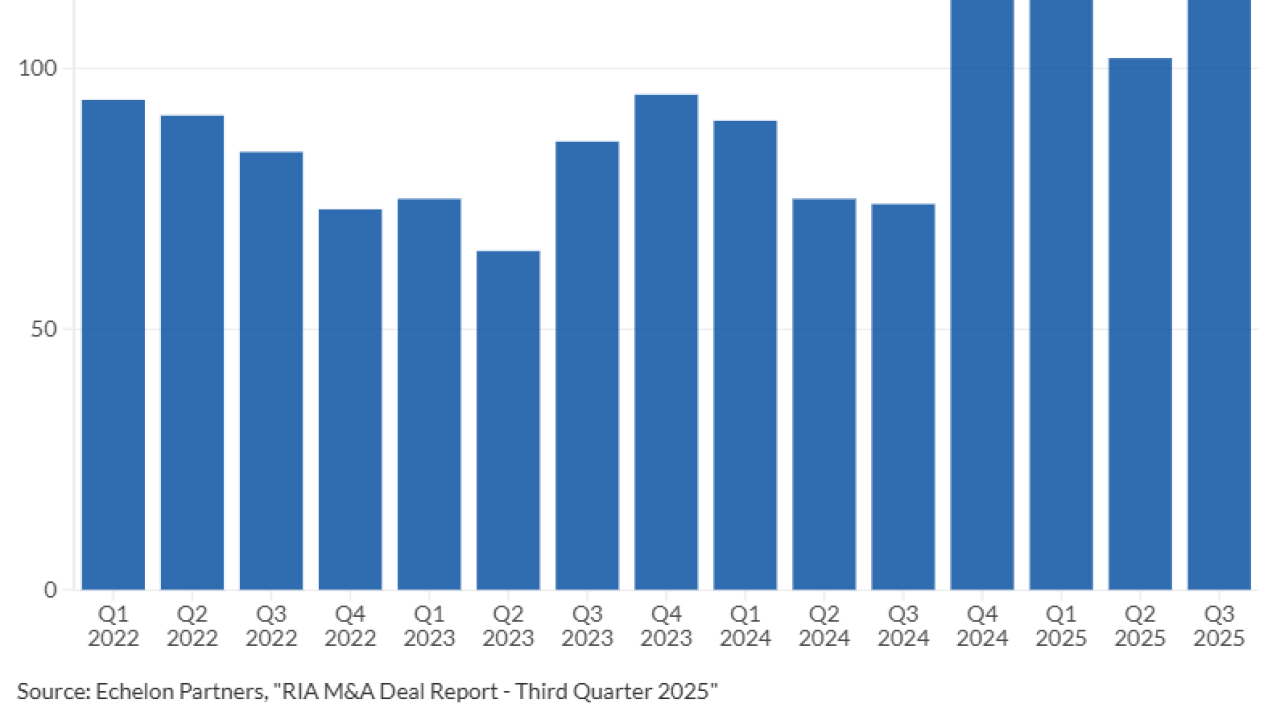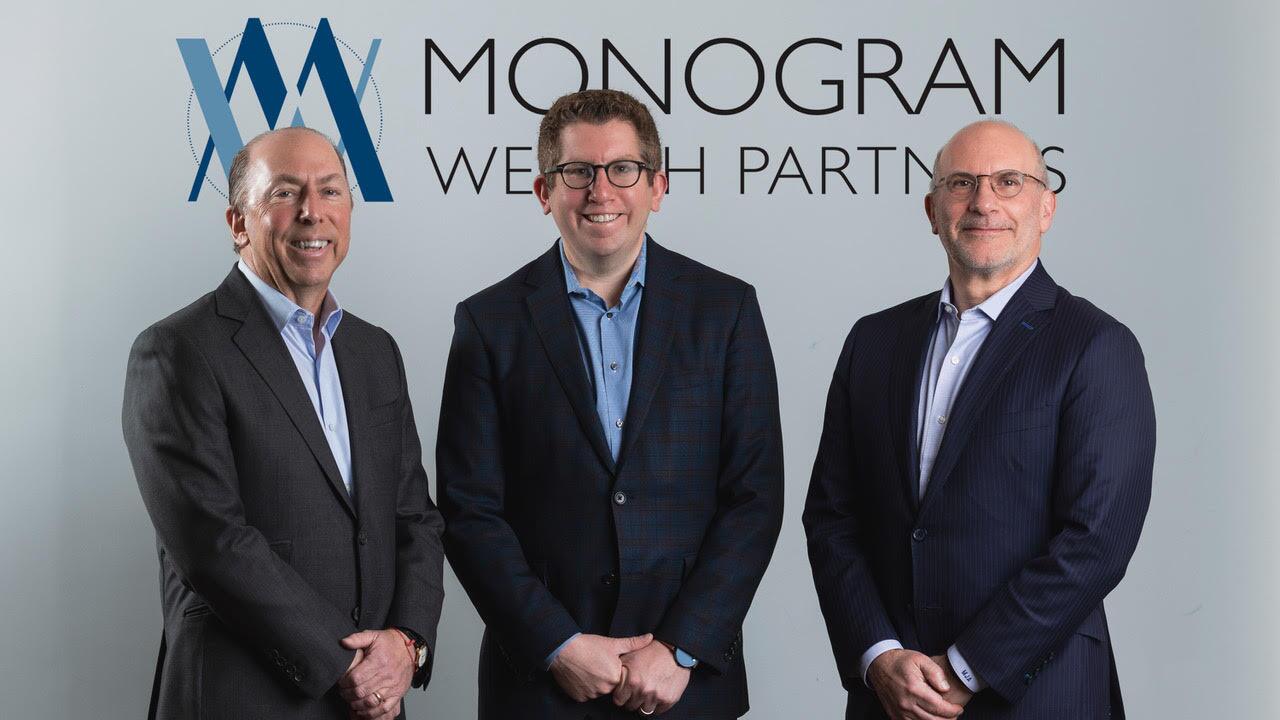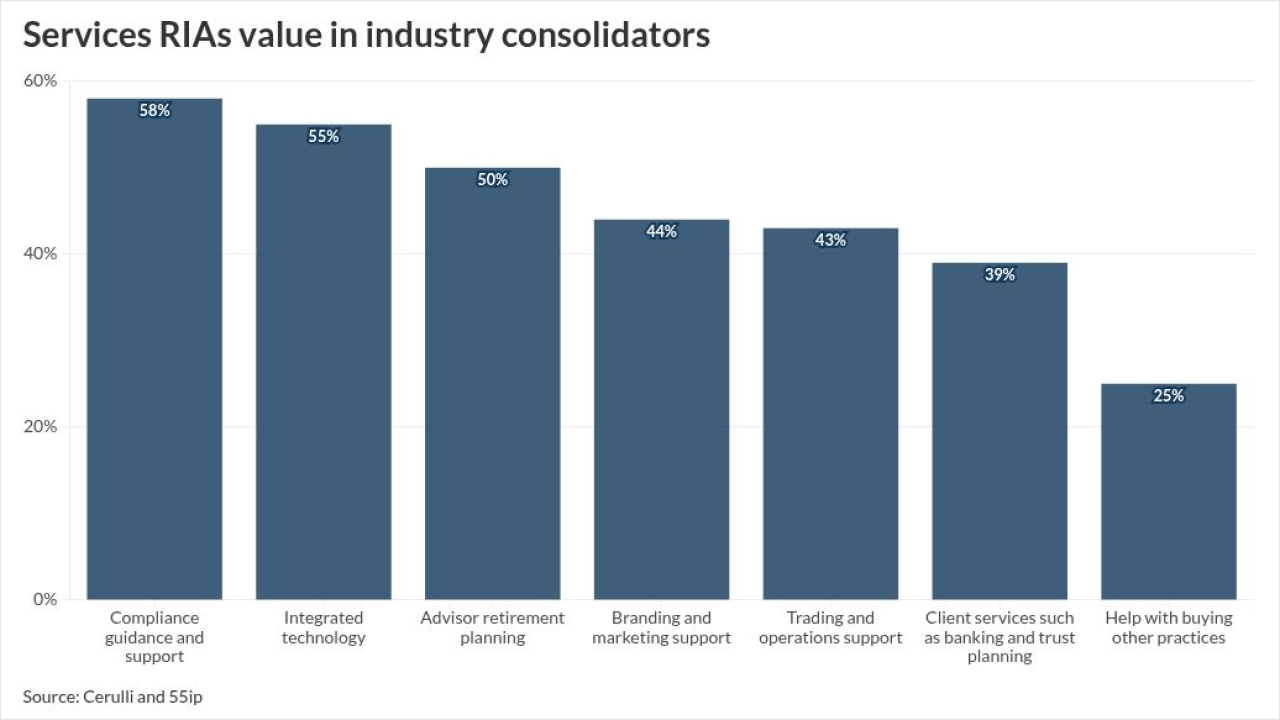

Success looks like becoming debt-free from her student loans earlier this year, buying a home one day and "the freedom and flexibility to live my life," said Jerica Robinson.
It amounts to "really just living my best life and what that might entail," said Robinson, a social worker and participant in the
There are some things that are goals for me right now. But that could change a year from now."
This is the third and final section of Financial Planning's feature
That is, "ultimately, the million-dollar question," said Michael Neal, an economist with the Housing Finance Policy Center and the Office of Race and Equity Research at the
"Were Black families that participated in the pilot — were they able to both grow their wealth and ultimately reduce the likelihood of being forcibly displaced from their community?" Neal said. "Being displaced from a community that is experiencing economic development, the research indicates that, oftentimes, those that are displaced move to communities that have less economic development. You get squeezed from both ends."
READ MORE:

The larger context
The West End and the Visitation Park neighborhood within it are "in a lot of ways very typical of what we're seeing across the country" in terms of the "cycle that cities go through," said Dara Eskridge,
The area began as "a private kind of enclave of huge, beautiful mansions" with many of them built around the time of the World's Fair in 1904, she noted. At the height of midcentury white flight to the suburbs in St. Louis County, the highway construction, Saint Louis University expansion and other eventual downtown development "leveled" Mill Creek Valley, which was "the largest community of Black St. Louisans," Eskridge said.
Afterwards, the West End became "rich with Black St. Louisans of all backgrounds" and occupations such as "doctors, lawyers, musicians, teachers and bus drivers," she noted. Today, the residents who are their descendants "have these deep, rich memories of being there," but many are struggling to maintain their parents' or grandparents' homes amid an influx of newer residents, she said.
"As far as we know, there is not a one-for-one" comparable program to Rooted that is "explicitly pairing people with financial planners," Eskridge said, noting the contrast with guaranteed basic income programs. "Anti-poverty strategies are very different from wealth-building strategies. They're on a continuum, but they're on different ends of that continuum."
Seeking to nurture Black wealth in the West End and areas like it means addressing problems as varied as the fact that many of the structures have "some of the highest quality old bricks in the country" that are often "more valuable than the houses" and the fact that there are "not enough children in the community" for there to be schools in the area, according to Vivian Gibson, who spent part of her childhood in the neighborhood and later wrote a 2020 memoir called "

Policymakers should "do the same things domestically" through investment in the West End and other urban areas as the U.S. foreign aid does in targeting "hunger and displacement in foreign countries" like Ukraine and the Middle East, according to Gibson.
"They need to look at these inner city neighborhoods the same way. We need an inner-city Marshall Plan," Gibson said. "There is nothing you can do for my sister that doesn't involve financial investment. She's just a prime example of what these neighborhoods are. … It needs to be anchored and celebrated that these people like my sister have stayed there for 70 years."
READ MORE:
The West End currently presents "a very weird dichotomy to look at" where there can be "a whole block of brand new houses and, across the street, it's desolate, it's abandoned," said Krista Cooksey, a researcher at Washington University in St. Louis who's a Rooted program participant.
"I think the goal for everybody is revitalization and making improvements and bringing businesses and vitality back to back to the community," said Cooksey. "The means in which that has been done historically needs to be analyzed and also adapted to make sure that multiple voices are included in that process. That, to me, would be success, just making sure that — after it's revitalized — it's diverse, it's accommodating and encompassing of as many people and communities as possible and representative of those, so the outcome is a representation of that process of including multiple people at the table, which has not been done historically."
That emphasis on inclusion locally can add up to the bigger impact across the country, according to Eskridge of Invest STL. With "people outside of Missouri and in some cases outside of the country" buying property in the area, she brought up the importance of the upkeep of houses. Mounting fines for maintenance deficiencies like loose shingles can lead to "that house being sold for pennies on the dollar" and put the neighborhood in a situation "like in many other places across the country a decade from now," Eskridge said.
The incoming property buyers are "creating all these pressures on the neighborhood," Eskridge said. "When we open those doors, the family behind those doors are no longer Black."

Personal wealth and national issues
Residents' ages represent one metric for whether the program has accomplished its goals, according to Tameka Stigers, the owner of the
"That helps drastically because they're the first ones to move out because they can't afford the taxes and they lose their homes," said Stigers. "Having the elders remain in the community is important for any community. You have to have a good mixture of all the age levels. I think right now what's missing to me is the youth in terms of being visible and walking to school."
With that backdrop of
After Buckingham Strategic Wealth and other pro bono planners each stepped up to work with two participants, Invest STL held an initial onboarding meeting with the volunteers and two West End residents, according to
"The most exciting part for me was the day that we had a big meeting and the participants got to meet their financial planners in person for the first time," Witthaus said. "The planners explained that all kinds of people they work with make financial mistakes, and that's OK because their job is literally to help people who make those financial mistakes without judgment. I think that put a lot of people at ease."

READ MORE:
Pro bono services for the participants carries a great deal of significance for the planners as well. Alicia Lewis,
"Land acquisition and being able to have a home and own it is a big deal in my family," Lewis said, noting her admiration for her grandparents. "They were very intentional in their homeownership and what they did with their home and how they reinvested. They would be proud of the work that we're attempting to do. The intent behind what we're trying to do is deeply meaningful to me."
When thinking about the larger importance of the program in St. Louis and around the country, "If you're not careful you could get pretty discouraged" about Rooted being such "a huge undertaking," said Stephen Rhodes, founder of St. Louis-based
"Me participating in this program doesn't change the system," he said. "'You're never going to get to all of them, why does it matter?' 'Well, it matters a lot to this one.' The point is still a valid one. Each of those participants, they matter. The ultimate outcome, I can't control. How do I help this one participant in whatever way that I can?"

Data on planning and success
For the profession of planners, the Rooted program will bring implications to "the broader conversation around financial counseling versus financial coaching versus whether or not any lack of awareness or knowledge is even a determinant of racial wealth differences," according to Neal of the Urban Institute. Their relationships with the participants could be "building the kind of trust that research suggests is lacking and for good reason," and "that can also, in turn, limit your ability to build wealth," he said.
"There's work that suggests that it's not a lack of knowledge
READ MORE:
The data from Rooted "is going to substantiate why this is important" in order "to procure additional funds for more widespread implementation of this," said Cooksey, the participant.
"The data-capturing portion is just as important as the anecdotal, conversational, our stories part of it, because we can say what we want," Cooksey said. "Being able to track actual numbers and metrics, there's no denying that."
Advising participants "really struck a chord with some personal experiences" as "someone who grew up with a single mom" whose family was on food stamps growing up, said Rhodes, the Signify Wealth planner. In some ways, the fact that the program is "intentionally desiring to work with folks who, in the past, may not have had access" to financial planning and investable resources makes Rooted much different from the industry's normal approach, he said. In others, a planner's role in the mission of the program relates to how the industry functions every day.
"The way it's structured is that it tends to give incentives for people to work with the people who have higher levels of AUM. If you don't have those assets, then you typically don't have access to high-quality advice," Rhodes said. "The conversations that I'm having, the topics that I'm discussing are no different than the normal demographic that we work with, and we do a lot of work with a lot of high-end folks. … You wouldn't be able to tell the difference."





